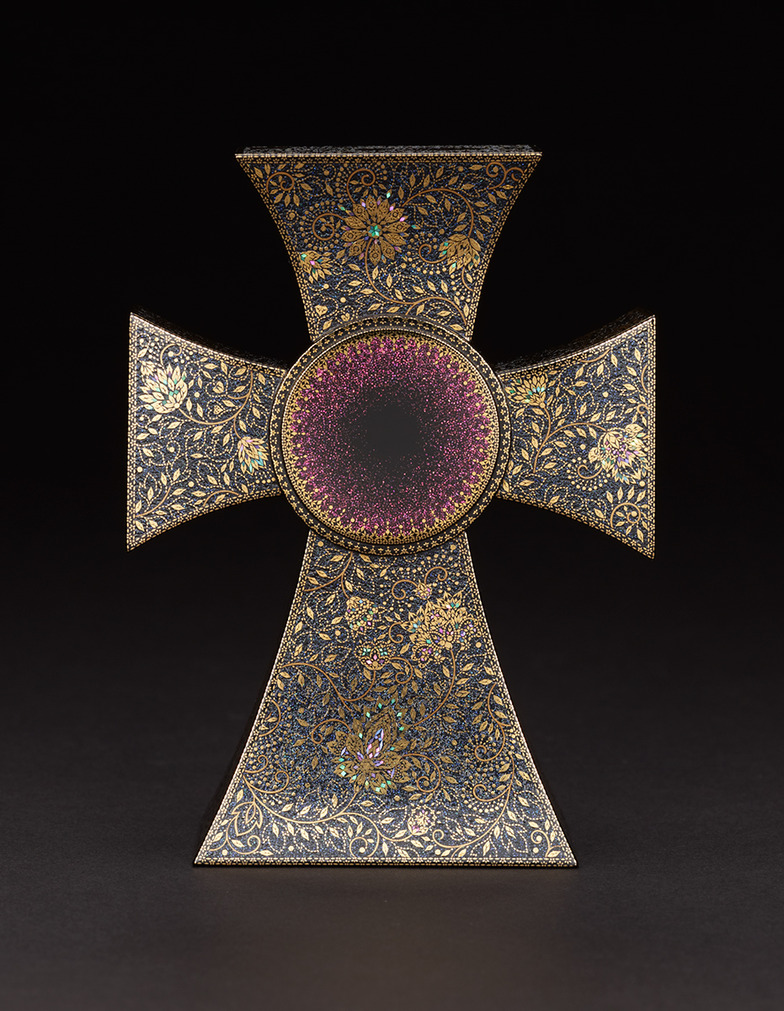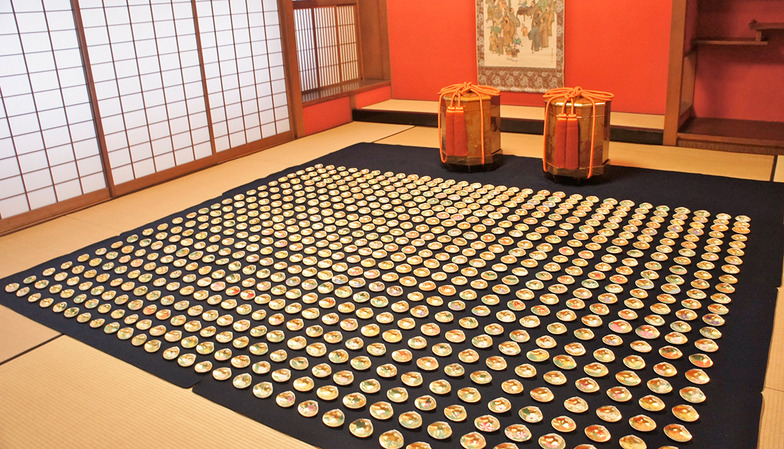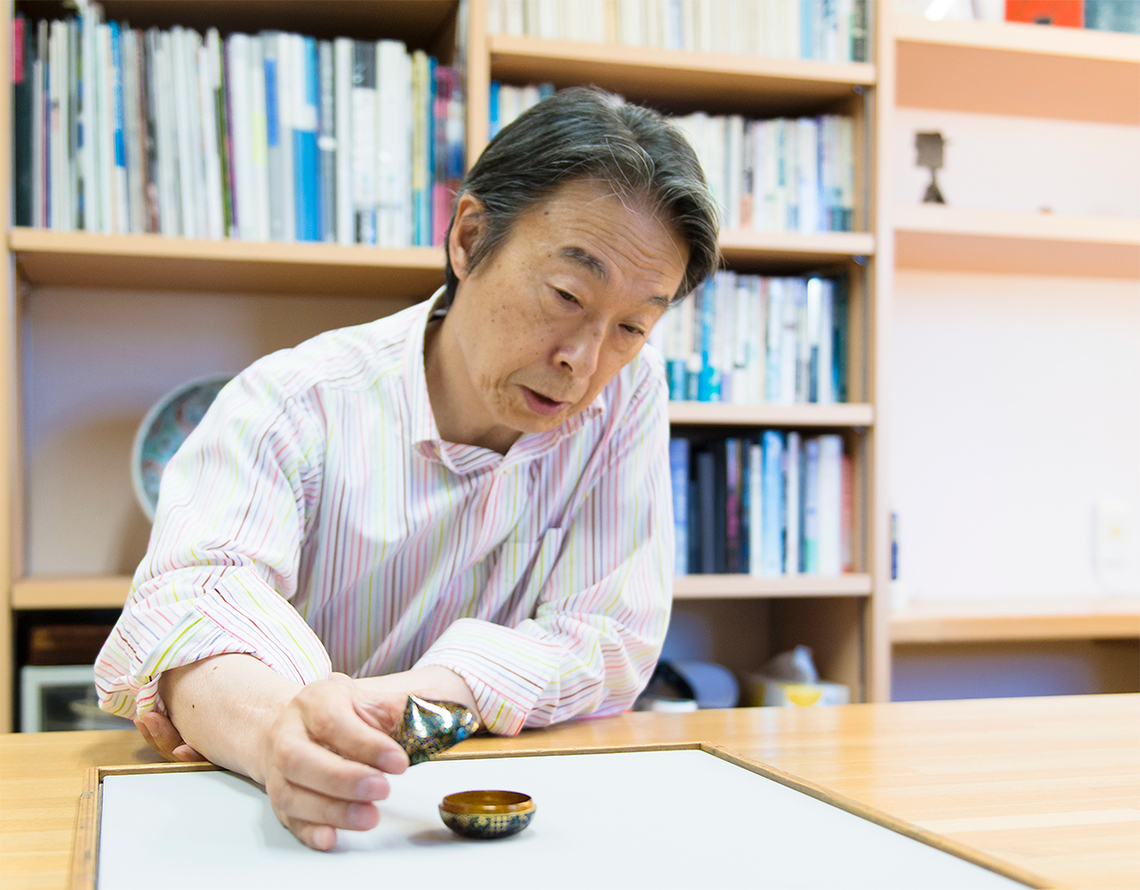Behind the scenes of "effective expression," we focus on "successful promoters of expressive activities" across various fields. This time, we spoke with Tatsuo Kitamura, who captivates global celebrities with his Wajima lacquerware pieces showcasing extraordinary technical skill.
It started as a means of livelihood. While I was born in Wajima, my father was a fisherman. I left for the city, returned home, and plunged into the unfamiliar world of Wajima lacquerware at the age of 21—considered relatively late. After years of apprenticeship and establishing my own workshop, it wasn't until I married, had children, and truly felt the weight of supporting a family that I began seriously exploring how to build my own lacquerware world.
In the Wajima lacquer world, where tradition is paramount, my "outsider's" perspective made me realize: "We must strengthen ourselves as makers." Learning that overseas auctions offered the chance to physically handle the highest-grade lacquer work at previews, I made my first overseas trip at age 35 to a London auction. There, I saw an Edo-period lacquered inro. It was a shock. The workmanship was incredibly intricate and astonishingly refined. I didn't know anyone in Japan who carried on this technique. "If we could make this now, all this know-how would become ours," I thought. So, I began research with my staff. After three years of trial and error, wanting to see the quality of the inro we had created ourselves, I went back to the auction. I showed it to a curator at the Victoria and Albert Museum in London, whom I had gotten to know, and they were astonished.
Then, people from overseas began visiting this Wajima workshop frequently. Curators from overseas museums came by bus for inspections, and sudden calls started coming in from extraordinarily wealthy individuals in Europe and America, or their agents. Customers began coming directly to this Wajima workshop to consider purchasing Unryuan pieces.
At that moment, I truly realized, "Ah, skill can indeed draw people." While the workshop meticulously crafts intricate lacquer pieces, including inro, we never actively shared this information. Unryuan doesn't even have a website. Yet, a specific market exists worldwide, constantly on the lookout for such Japanese crafts, and information circulated through word of mouth. Word of mouth is the most powerful tool. And the key phrase was "I don't know where to buy it."
Creating a single piece involves the hands of five to ten artisans, sometimes taking as long as five years. We show visiting customers our limited stock or explain plans for future pieces. It's all one-on-one, face-to-face transactions. It's a world where customers, having considered a purchase, return to Japan in a hurry just days later, not wanting to miss their chance.

"Unryuan" Tatsuo Kitamura
Sarasa Makie Cross, 2007, Collection of 21st Century Museum of Contemporary Art, Kanazawa
©Unryuan, KITAMURA Tatsuo
Photography: Osamu Watanabe Image Courtesy: 21st Century Museum of Contemporary Art, Kanazawa
I believe it is crucial to broaden the base of technical skills among the younger generation. In recent years, I have launched an NPO called the "Lacquer Craft Research Group" with young artisans, beginning efforts to share techniques and analyze market trends. Last year, together with young artisans and experts from this NPO, we completed a project to recreate a "set of shell-inlaid lacquerware" originally used as wedding furnishings for feudal lords during the Edo period. It took about 50 people in total and approximately two and a half years. The goal was to revive Japan's highest level of craftsmanship. Actually, the sponsor was from Australia, and the finished pieces will eventually be donated to an overseas museum. For the revival and inheritance of such craft techniques, I sincerely hope to enlist the support of Japanese companies in the future. After all, I want the finished pieces to remain in Japan. This May, we opened a second workshop called "Kōgei Tachisha." I envision this as a place where young people live and work together, laying the foundation for becoming independent as both artisans and members of society.
The market for Japanese crafts is expanding globally. Customers seek things they've never seen before, unexpected creations. Technique creates beauty and evokes emotion. And I feel Japan still possesses an overwhelming abundance of such extraordinary techniques.

Chrysanthemum Makie Shell Box Set, 2015, Pauline Gander Collection (Australia). Created based on a shell box formerly owned by the Mōri family.
All 360 pairs of shell-matching pieces feature different designs, with intricate floral patterns in vivid colors meticulously painted on a gold ground.
©KITAMURA studio






